Of all types of wooden doors, the most tried and tested are those for exterior use. Humidity and low temperatures in winter, high temperatures and the aggressiveness of UV radiation in summer are the trials that doors have to face. In order to be as resistant as possible over time, they are made of wood with higher humidity than furniture wood, construction solutions are adopted that allow dimensional variations, varnishes and exterior adhesives are used. If the doors are made of solid wood with glued elements, then adhesive undoubtedly plays a very important role.
Natural stresses on wooden exterior doors
Let's take a closer look at the stresses on wooden doors and what this means for the adhesive. In winter, when temperatures drop below 0°C, the atmospheric humidity drops dramatically. The reason is that water in the air turns to ice. The balance is disturbed and rebalancing is done using the available moisture. One source of moisture is water in wood. That's how cracks in wood appear in winter.
The stresses that occur in the wood due to water removal also put pressure on the glue lines. If they are not resilient, the glue can fail. When the glue is of good quality and suitable for the location and scope of use of the object, the glueing is strong and cracks will always appear in the wood, never in the glue line.
In summer the enemy is the sun. If the door has a dark color and is in direct sunlight between 10 a.m. and 5 p.m., the surface temperature rises sharply and can affect the adhesive. The bonding needs to be made with an adhesive with very high temperature resistance. This way, whatever the temperature, the bond line will retain its characteristics.
Also important are the finishing materials and how they are applied. Protection on all sides, on both sides and edges, the use of semi-transparent products containing pigments, a low-gloss varnish, are "details" that can make all the difference.
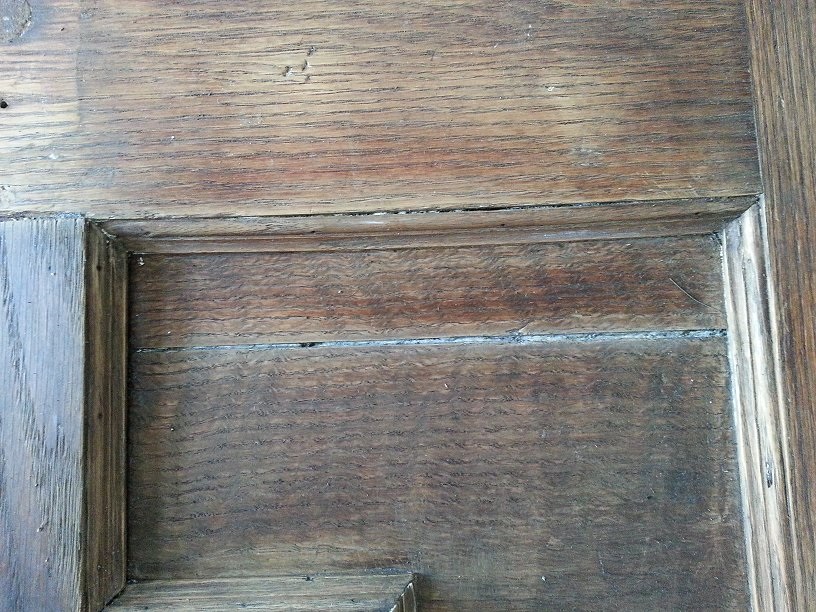
The solution found by Szolvegy Târgu Mureș for timber framed doors and plank doors
The most commonly used construction solution for doors is the frame and slats. The boards are not glued but are fixed into the frame so they can vary in size depending on the humidity in the environment.
I told you on other occasions that the best solutions are found when supplier and customer work as partners. So it happened in this case. A door manufacturer in the summer was having trouble with solid wood doors with solid wood trim. Especially those in very dark colors. He enlisted the help of an adhesive funder to solve the problem.
The specialists from Solvegy Târgu Mureș started from the idea that each of the door elements reacts differently under the action of the sun. The frame, being made of whole elements joined together at the ends, needed a very elastic adhesive that would ensure a very strong bond. The canvas, made by gluing several elements together, had to be made in such a way that it could withstand the aggression of the summer sun. A very strong adhesive was needed which was totally 'indifferent' to any aggression to which it was subjected.
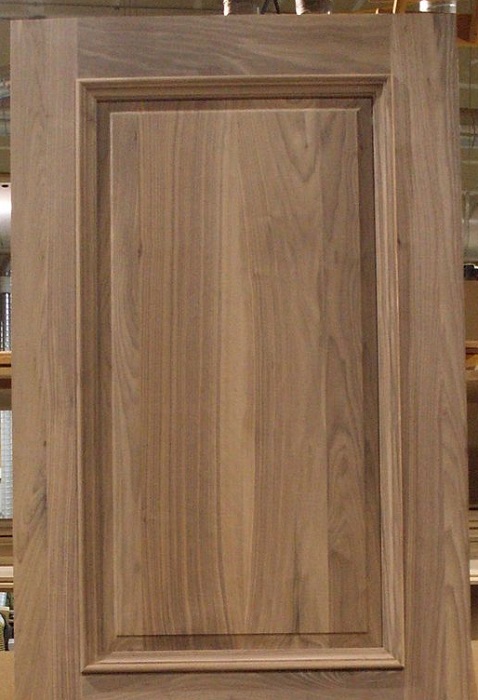
The saving solution - combining the qualities of 2 adhesives
Tests have shown that the best results are obtained by combining the qualities of 2 adhesives. They used a D3D adhesive for frames, i.e. a D3 adhesive with improved qualities, and a single-component polyurethane adhesive of the D4 class for the boards, which gives very good exterior results.
They seem to have made the perfect choice because the doors made in this way have had no more problems. The solution has also been suggested to other manufacturers who have significantly reduced the number of complaints in summer. They are convinced that it is the best solution for such doors and confidently recommend it to all customers.
Because they are superior adhesives and can be used successfully for other joints, a brief introduction to each may be helpful.
TISZABOND D3D adhesive
It is an adhesive based on polyvinyl acetate (aracite), which has reactive groups that improve its qualities. The adhesive has increased wet tack, frost resistance, even to repeated freeze-thaw cycles and the resulting film is softer and more elastic. The glued wooden elements can move in the case of moisture variations without the glue line suffering. In wooden door frames this is very important because of the long sides. The dimensional variation is noticeable and the adhesive must be able to take it up.

It is suitable for demanding jobs such as producing steps for interior staircases, kitchen worktops, folding chairs, restaurant chairs, sauna elements.
It can be used in construction for indoor bonding not subject to high humidity. As an example, it can be used for bonding wooden steps to concrete stairs.
TISZPUR Adhesive D4 4401 Special
It is a one-component polyurethane adhesive that reacts with atmospheric moisture. The resulting film is very elastic, very adherent and with very good resistance over time.
Its main quality is its resistance in outdoor conditions, where high humidity is one of the problems. For this reason it can be used in construction. Due to its very good moisture resistance it can also be used in shipbuilding.
The adhesive bonds wood smoothly to plaster, brick, metal or concrete. Unlike other adhesives that are disturbed by water in the materials, for this adhesive the presence of water guarantees a good bond.
Another area where TISZPUR D4 Special polyurethane adhesive can be used is bonding exotic wood. It is already known that exotic woods offer all sorts of unpleasant surprises. The wide variety of salts and tannins contained in it can lead to weakening of the bond. Using polyurethane glue eliminates this risk.
Also in construction, the adhesive can be used for bonding insulation materials in the form of tiles or mats. Regardless of the nature of the insulation material - expanded polystyrene, glass wool, plasterboard, wood fiber boards - The bonding is very strong and secure.
In conclusion
Doors used outdoors are subject to air humidity variations, temperature variations, bad weather and UV radiation. Therefore, when manufacturing wooden doors for exterior use, it is important to choose the construction solution and materials that can withstand these aggressions.
As for the adhesive, it needs to be highly elastic and have high moisture resistance. Szolvegy found the right solution by combining 2 adhesives with very good qualities. It is the solution that solved a customer's problems and that he recommends to all those who produce doors of this type.

























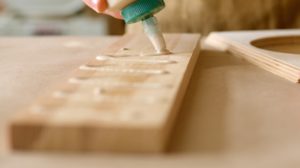

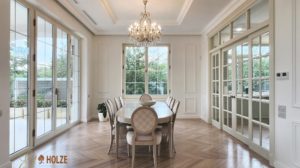


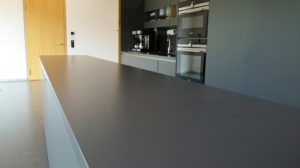





Hello Mrs Mihaela,
My name is Lapusan, and I am facing a problem of shrinkage in restored resin door panels of historical buildings, the problems are delicate and with your experience and passion for wood, I dare to ask for your opinion.
Thank you very much for your kindness in finding some workarounds.
I.Lapusan
Hello!
Unfortunately, it's a problem that commonly occurs with old doors that are made of solid wood, not laminated wood. Because of this, it varies visibly in size depending on the humidity of the interior environment and after decades. Because we use heating means that dry the air (radiators), the indoor humidity drops a lot and the wood shrinks because it gives up its moisture. The door frames "shrink" and if the edge has not been stained, it becomes visible. After the heat stops, the humidity slowly increases and gradually the doors recover. This is the reason why the boards do not stick and have play in the frame. If they were glued, shrinkage would lead to cracks.
The doors will look good again in late spring. There are no solutions to stabilize such doors. What you can do is to stain in the same colour the part of the frame that goes into the frame so that it is no longer visible when the wood tightens.
In the past, this phenomenon did not occur because heating was done with firewood that did not dry the air. When wood is burnt, water vapour is released and so the air inside does not dry out very much. One solution would be to install air humidifiers in the rooms where these doors are located, or to put pots of water on the radiator.
The article below explains in detail what happens to wood in winter.
All the best!
https://revistadinlemn.ro/2017/01/11/lemnul-si-obiectele-din-lemn-timpul-iernii/